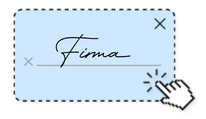Have you ever found it challenging to grasp legal concepts, feeling like you're learning another language? Or, if you're a lawyer, have you ever felt that when trying to communicate legal terms, your interlocutor doesn't always understand what you're talking about? Legal design is a relatively new discipline that has emerged in response to the need to make legal language more accessible and understandable for ordinary people. It is often considered a user-centered design approach applied to legal issues. In this article, we will explore what legal design is and how it can be implemented in different contexts.
What Is Legal Design?
Legal design is an approach to designing legal solutions that places the user at the center of the process. This involves using design techniques to simplify language and make solutions more accessible. The main goal of legal design is to make the law easier to understand and apply for ordinary people.
Why Is Legal Design Important?
Law is a highly specialized field that, despite seeking the common good, often uses complex and technical language. This complexity can make it difficult for the end user to understand and apply laws to their everyday life. Legal design aims to address this issue by simplifying language and making the law more relatable and understandable for everyone.
How Can Legal Design Benefit Businesses?
Businesses can leverage legal design in several ways. Firstly, by making regulatory frameworks and standards more accessible and understandable for clients, employees, suppliers, and other stakeholders, businesses can enhance their reputation and build stronger relationships with users. Additionally, legal design can help reduce the risk of litigation by creating clearer and easier-to-understand legal solutions for all parties involved.
How Is Legal Design Implemented?
Legal design is implemented through various techniques, including simplifying language, creating diagrams and visualizations to explain legal concepts, and applying user-centered design principles. Legal design may also involve creating legal solutions that are more intuitive and user-friendly for ordinary people.
Examples of Legal Design in Practice
Legal design has been applied in various contexts, from creating simpler and more understandable contracts to streamlining legal forms used by courts. Here are some examples:
- Simplifying Financial Services Contracts: Financial services contracts are often complex and challenging for consumers to understand due to language and technicalities. Legal design has been used to create simpler and more understandable contracts for consumers.
- Social Justice to Address Social Issues: Projects like "Design for Justice" focus on designing solutions for social justice. This project uses legal design to create creative solutions for social issues, such as racial discrimination and lack of access to healthcare.
- Privacy Policy Design: Legal design is used in crafting privacy policies to inform users about how their personal information is used. It makes these policies easier to read and understand, empowering users about their rights and responsibilities.
- Business Law to Enhance User Experience: It is utilized in drafting contracts to make them more understandable for people without legal knowledge. This is achieved by using clearer language and graphics to represent terms and conditions.
- Criminal Justice to Improve System Effectiveness: An example is the "Reimagining Prison" project, focusing on prisoner rehabilitation. Legal design is used to create programs that help prisoners reintegrate into society and prevent recidivism.
Conclusion
Legal design is a technique that can be applied in many fields to generate more effective and user-centered solutions. Through legal design, legal issues can be creatively and efficiently addressed, improving the user experience, building closer relationships with users, and promoting social change. We hope this article has been helpful in understanding the use cases of legal design.





